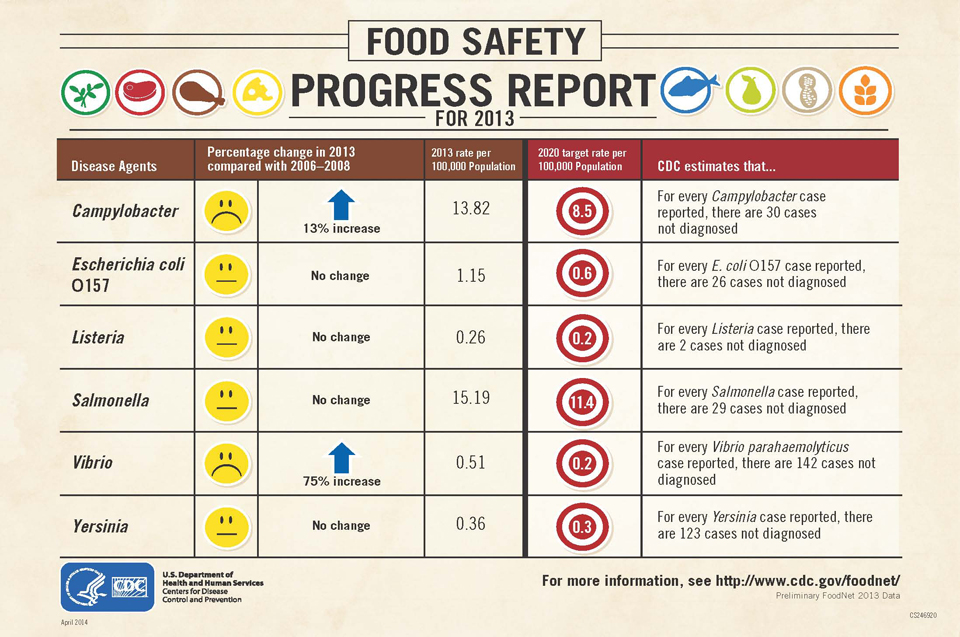Despite new efforts to curb the rates of food poisoning in the United States, a new report from the Centers for Disease Control and Prevention shows that overall rates are remaining stubbornly steady. As can be seen in the chart below, the rates of salmonella, E. coli, Listeria, and Yersinia infections reported in a sample group of US sites remained unchanged in 2013 as compared with 2006-2008. Additionally, rates for Campylobacter and Vibrio actually went up.
What does this mean for consumers? Most importantly, it emphasizes the need to make food safety a priority to prevent foodborne illness.
Tips
Whenever handling food, always keep these tips in mind:
- Wash hands and surfaces often: As you prepare food, wash often with soapy water and keep everything clean that is in contact with food.
- Prevent cross contamination: Raw food can have bacteria on it that can contaminate other foods. Wash hands, utensils, cutting boards, and work surfaces with hot soapy water after contact with raw meat and poultry.
- Cook foods to proper temperatures: Use a food thermometer to make sure meat is thoroughly cooked. It’s the only reliable way to ensure safety and to determine the doneness of cooked meats, poultry, egg dishes and leftovers. Meats should be cooked to an internal temperature of 160 degrees. Reheated foods should reach a temperature of 165 degrees or come to a full rolling boil.
- Store food at a safe temperature. Refrigerate foods quickly and at a proper temperature of 35-40 degrees to slow the growth of bacteria and prevent food poisoning. If foods should be served cold, be sure they remain cold and not at room temperature. Hot prepared foods should be held at 135 degrees or higher. If leftovers can’t be eaten in 4-7 days, freeze them for future use. Or, throw them out.
Written by:
Bridgette Kidd, MPH, RD
Healthy People Program Specialist, Family and Consumer Sciences
Ohio State University Extension
kidd.149@osu.edu
Reviewed by:
Linnette Goard, Field Specialist, Food Safety, Selection and Management
Family and Consumer Sciences
Ohio State University Extension.
Sources:
Centers for Disease Control and Prevention. (2013) 2013 Progress Report on Six Key Pathogens Compared to 2006-2008. Available at: http://www.cdc.gov/foodnet/data/trends/trends-2013-progress.html
Rohrs, B. (2013) Foodborne Illness: Guess Who Came to Dinner? Ohio State University Extension, Family and Consumer Sciences Fact Sheet. Available at: http://ohioline.osu.edu/hyg-fact/5000/pdf/5570.pdf


